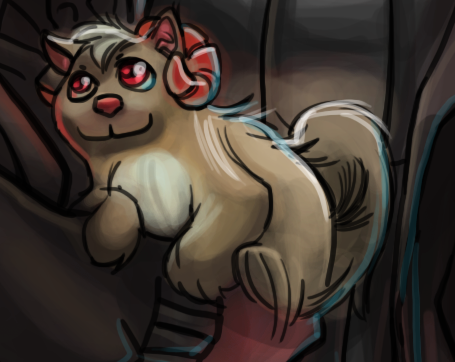Table of Contents
Otar (Horned cat)
About the Otar
The Scientific Studies Service (SSS) encountered the Otar during the early exploration prior to colonization. The Otar were found to be bright and curious. Having never encountered humans they had no instinctive fear, but were still wary of the strange creatures in their territory.
Appearance
The Otar resemble terran cats, with a bushy tail, the length is equal to the torso. They have a proportional pair of ram like horns. Coloration is light colors tan, beige on the underside. Common fur colors are brown, tan, white, black. Some Otar have been seen with spots.
| Otar (Horned Cat) | |
|---|---|
| Planet: | Daichi |
| Species: | Feline-like |
| Class: | Ground |
| Active: | Diurnal |
| Length | |
| Male: | 43 to 91 cm (17 to 36 in) body length |
| Female: | 40 to 77 cm (16 to 30 in) body length |
| Weight | |
| Male: | 5 to 8 kg (11 to 18 lb) |
| Female: | 3 to 5 kg (6.6 to 11.0 lb) |
| Life expectancy | |
| Wild: | 13–14 years |
| Domesticated: | Unknown |
| Diet: | Omnivore |
| Special: | Empathic/telepathic connection |
Behavior
Otar are very curious, social and intelligent for animals. Much like cats they are fairly independent. Their are rated with an almost child like intelligence, and limited problem solving skills. They have been seen using their horns to defend against larger predators, and to stun prey. They are attracted to small shiny objects. They a gregarious by nature and rarely found alone. Otar are typically diurnal, but can operate at night. They seem to require about 7 hours of sleep in a day.
Senses
Otar being diurnal see best in daylight, their night vision is better than humans but limited in range. They have good hearing, and are able to track a prey by sight or sound.
Otar communicate with a variety of yips, mewls and chittering. They also have a limited ability to send/receive images mentally.
Otar are very loyal pets, and are protective of their companions.
Diet
Otar diet is mostly small prey, birds, rodents and fish have been seen as food items. They also enjoy eating an assortment of fruit. Otar enjoy snacks of small crunchy vegetables, carrots, celery, etc.
Life Cycle
Otar reach maturity at 1 year, and can breed shortly thereafter. If there are no male Otars in the area, the females will not go into heat. A typical litter consists of 3-4 kittens. It takes 8-10 weeks for birth. A mated pair will remain together for life.
Domestication
Otar are not truly domesticated, but are very adaptable to life among humanoids. They can be trained to perform simple tasks. It was discovered during training attempts that Otar possess a limited form of empathy/telepathy. Feral Otar would perform 'tricks' taught to ones with human companions. This led to the discovery that Otar possess empathy and telepathy within their own species. It was found that this gift could be used with their owners/companions. This works best line of sight. The empathy and telepathy with humanoids requires several months of interaction and close contact. Otar do not understand humanoid language per-say, but the intent behind the words. It is possible to communicate by simple images. Visualizing what the companion wants the Otar to do and vice versa. Typically an Otar will only link to a single person, but it is possible to bond with more than one.
Empathy works out to 1,000 meters.
Telepathy works out to 100 meters.
Other information
- Stewart, Raquel was one of the first people to establish a relationship with an Otar. She is considered to be one of the experts on the species.
